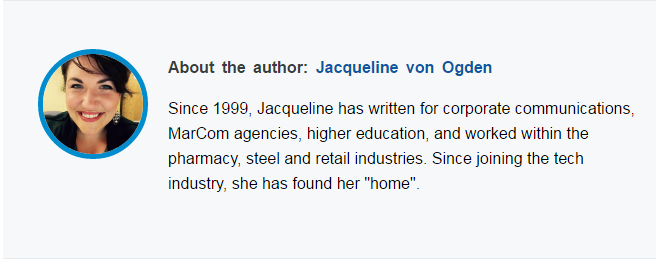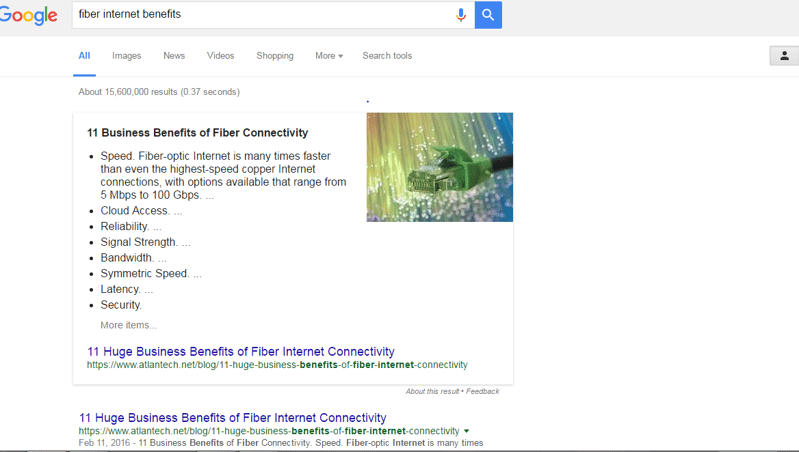When asked to rank the most commonly missing skill sets on their team, content and blog promotion took third place for today's organizations. It's not that modern marketers can't market, it's really just that blog promotion is a unique beast.
If you're struggling to get eyes on your content, you're not alone. Building a community takes time and effort. But even in highly-saturated and noisy niches, it's totally possible.
This blog post might be incredibly useful to you if you:
- Have a brand new blog or website
- Are a startup, young company, or have recently rebranded
- Have been blogging for a while, but get <10,000 website visitors a month
Wait. Is Blog Promotion Also Content Promotion?
By the way, we covered 31 Content Promotion Strategies in a prior blog. These include hacks like:
- Creating influencer round-ups.
- Using Quora and Reddit.
- Co-creating and co-branding content with other companies.
- Using LinkedIn Pulse.
- And 27 more!
There's a subtle difference between content promotion and blog marketing, however.
- Content promotion is using paid, earned, and owned media to increase exposure for your blogs, eBooks, data sheets, and other assets.
- Blog marketing is using media, relationships, and awareness to let your customers and prospects know about your content assets.
These concepts aren't really that different, and there's definitely some overlap. Your brand should view both content promotion and blog marketing as ongoing efforts.
Join us as we review how the smartest content marketers and aspiring thought leaders approach blog promotion online, offline, and everywhere in between.
1. Join a Mastermind Group
Mastermind groups aren't a new concept. In fact, Forbes reports that exclusive groups for professionals were invented by Napoleon Hill around 75 years ago! If you're able to find a meetup that clicks, you can anticipate:
- Business mentors and advisors.
- Collaboration opportunities.
- Networking.
- Cross-promotion.
- Exposure to cutting-edge ideas.
All of these concepts can mean great things for your blog's visibility within your industry. You could gain guest blogging opportunities, collaboration partners, and peers for mutual content-promotion.
No group in your area? Tiny industry? No fear. There's an abundance of groups online, or you could look to marketing-specific meetups for many of the same benefits.
2. Make Your Blog Easy to Navigate
If your blog is tough to navigate, you may be facing an unnecessarily inflated bounce rate. Not only that, it can drastically reduce the sharing appeal of your content. While there are no laws about the anatomy of a perfect blog, you'll have a much easier time marketing if you have each of the following in place:
- A blog title (i.e. "Inbound Marketing Insights Center")
- A search feature
- Tags
- Posts organized by author
- Smart use of internal links
- Tastefully-used, relevant calls-to-action
3. Include Author Info
Forty percent of people respond better to visual information than plain text. Research also indicates that we're drawn to real human faces over landscapes and other nature photos. One of the most fascinating visual content marketing studies even found that actual photos of staff convert better than stock images.
While taking the time to set up author bios and pictures as part of your blog template may seem like a silly blog marketing hack, it's well worth your time. It lends a personalized and inviting touch to your content. As a bonus, if you're using a CMS like HubSpot, it's quite easy. Example below:

4. Make Your Blog a Prominent Part of Your Website
Is your blog link buried in the footer of your website, somewhere near your brick-and-mortar address? With a well-designed website and great navigation, the four most-visited website pages on company's website are:
- Home Page
- About Us
- Blog
- Contact Us
This page flow probably resonates with your experience as a consumer, too. Before engaging with a brand, you research their history and then their content.
While website navigation best practices can vary, and there are few hard-and-fast rules aside from ease of use, having a visible link to your blog in your website header or menu is crucial groundwork for basic marketing.
Check out how real brands have achieved usable and gorgeous UX in 6 Examples of Great Website Menu Design (and Why They Work).
5. Provide Assets to Sales and Customer Service
Content plays a major role in sales. However, some research indicates that 41% of sales pros aren't taking advantage of marketing content for a number of reasons. This means your content isn't getting exposure, and they're working a lot harder than they need to.
The same study found that the top three content-related pain points for sales are:
- Can't find anything
- Can't find the right things
- Don't know what content works
The job for content marketers is to make it as easy as possible for sales to access content. This can include:
- Making quick content guides or a knowledge center.
- Linking content to customer and prospect FAQ.
- Communicating regularly with sales about content metrics.
- Sharing customer journey research (and recommended content resources) with sales.
6. Create a Knowledge Center
If your customers don't know about your content, you're in trouble. This means that they're writing your coworkers emails instead of clicking on a blog that answers their questions. It means they're not sharing really helpful content with their friends organically--which is one of the most effective ways to market your blog and your brand.
The solution could be a knowledge center.This externally-facing resource can be as simple as a dedicated page on your website that lists out FAQ, and links to resources that provide the right information. By making it as easy as possible for people with questions to find answers, your blogs can become a living resource.
7. Integrate Feedback Cycles
Whether or not you've ever spent time near software development, you've probably heard of the Agile Methodology and feedback loops.
In the content realm, integrating this concept means you're always listening. Instead of hiding in your office until you've churned out an entire quarter's worth of content, it means you're viewing your content calendar as a living document.
Integrating feedback cycles means actively working to integrate customer and colleague feedback in your work, including monitoring your metrics, watching social media, and pivoting existing assets when you don't get the response you'd hoped for.
This isn't overt blog marketing by any means, but it's good business. Showing your customers and prospects you care about their feedback by delivering immediately reflects well on your whole brand.
8. Do Digital PR
Public relations isn't dead. While there's been an enormous amount of disruption in the media space over the last few years, PR is definitely alive and well. It's just shifted slightly.
Don't think of PR for blog marketing like you approached PR for product releases in the 1990s. Digital PR for 2016 and beyond will involve some different tactics. These could include:
- Engaging in offline, online, local, and international efforts to be an active part of your field.
- Working on building relationships with journalists, authors, bloggers, and other individuals.
- Promoting your online presence offline (and vice versa).
- Spending time daily in online industry communities and discussions.
9. Integrate Tools for Trend Detection
If you're still blogging about the newfangled invention called the electric lightbulb, there might not be much point in marketing your blog.
I'm joking (of course), but an important criterion for marketable content is stuff that's relevant to the here and now, not topics that were trending a year ago, ones that are salient TODAY.
Content marketers need to integrate trend detection into their daily workflow. You might start your day with a huge cup of coffee and checking emails. Take an extra 15 minutes to learn what's new in your industry. I promise it's worthwhile.
While options can vary, ideas for trend detection can include:
- Putting recurring industry studies and reports on your calendar to access as soon as they're released.
- Creating a short list of high-value thought leaders to subscribe to.
- Using search and social listening tools.
- Surrounding yourself online and in-person with smart, up-to-date professionals.
- Asking the right questions in LinkedIn groups and customer interactions.
10. Focus on Pillar Posts
Every blog needs a series of pillar blog posts. These are defined as your cornerstone content. Chances are, they're most likely thoughtful and in-depth answers to your customer's most frequently asked questions.
Examples of pillar blog posts include:
These blog posts have the potential to act as enduring anchors when it comes to your content. If you do it right, they'll continue to draw search engine traffic and conversions for years to come. If you're really lucky, you could even earn a coveted spot as a Google recommended resource for your top customer frequently asked questions:
But how do you accomplish this? SEO in 2016 is a complex topic, but you'll have the best chances of creating winning pillars for your blog if you:
- Write a longer, smarter, and more in-depth article than any existing content on the topic.
- Promote your pillar posts on social media periodically.
- Frequently update your pillar content as best practices and data change.
11. Build Up Your Thought Leadership
As you strive to build your blog's reputation and prestige, it's also wise to focus on improving your own reputation as a subject matter expert. The same goes for any of your colleagues who are contributing on a regular basis.
If you're able to be recognized as a "foremost authority," you'll carry a lot more weight as a blogger. You'll gain opportunities to indirectly market your content and company brand through speaking engagements and media interviews.
Blogs are tied to your company's reputation, as well as the reputation of the authors. By aggressively pursuing thought leadership, you can boost all three at the same time.
We've previously set out to discover 5 Things True Thought Leaders Always Do, which include:
- Selecting a focus/unique value proposition (UVP).
- Developing a defined and unique voice.
- Committing to the creation of high-value content.
- Continuously learning and growing.
- Proposing new ideas or performing research.
Leaving a good comment on a well-written blog in your niche is a smart thing to do. If you do it enough times, people will notice and start clicking over to your website. You may even gain quotation requests and guest post invitations in the process, too.
What defines a useful blog comment? According to ProBlogger's Darren Rowse, it can encompass:
- Using your real name.
- Sharing a story.
- Providing a relevant example.
- Offering a fresh point of view.
- Asking a well thought-out question.
There's no magical word count for a "good comment." It's measured in depth, relevance, originality, and most importantly, the value you're offering the blog author and their community.
To be clear, the opposite of this approach is leaving comments that say "good article!" and a link to your blog, or other methods that show you're just there for self-promotion and a no-follow link.
13. Create an Amazing Piece of Content
Every single piece of content you create should be amazing. End of story.
However, creating a really unique, intensive, and high-value piece of content can be PR gold. Examples of this can include:
- An original industry study.
- A massive round-up of industry data.
- An eBook consisting of topical thought leader interviews.
- A super valuable and unique checklist.
Not only can this level of content provide a starting point for a lot of high-value blogs, it can also significantly assist in marketing efforts. If your budget is low, co-branding could really be the right approach on this concept.
Follow up your awesome content with every promotional hack in your playbook, and then some—create a press release, reach out to thought leaders with the resource, and consider paid promotion. With enough links and coverage, your blog readership could skyrocket.
14. Use Paid Promotion Wisely
Is paid promotion part of the purist inbound methodology? Probably not technically, but it's a nuanced enough topic that even thought leaders are pretty divided on it. A recent HubSpot blog took a pretty balanced approach to the idea.
HubSpotter Carrie Dagenhard concluded that if you're paying to promote something that is "relevant, shareable, enjoyable and help[s] solve a problem or meet a need" on the right channels, you're probably in the clear.
The right approach to paid content promotion for your brand may include the following channels:
- LinkedIn sponsored updates
- Outbrain
- Sponsored content within publications
- Paying for placement in industry journals
15. Think Like a Journalist
Many of the world's brightest content marketers come from a background in journalism. Others, well, don't. Regardless of where you're starting from, there's value in learning from journalists on the ground, especially when it comes to being aggressive about "getting the scoop.
Journalists spend a great deal of time watching trends to figure out the next great human interest story. They're aggressive about finding the right interviewees to lend some weight to their content. The best are dedicated to being unbiased, accurate, and balanced because their careers depend on it.
Print journalism may or may not be dead, but the journalist's skill set certainly isn't. Using industry tools like HARO and LinkedIn groups to find interview subjects and breaking ideas can give your content a serious edge. And there's honestly no better marketing tactic than being the best at what you do.
Blog Promotion: Doing it Right
Until there's college coursework in blog promotion, us inbound marketers are stuck inventing the wheel. What works perfectly for one brand may not cut it for another. While it's up to your metrics and feedback to decide the specific approach to paid, earned, and owned promotion that gets you to the top, you can rest assured that you probably already know what you're doing. At least in theory.
As it turns out, there's a ton of blur between brand promotion, personal brand promotion, blog promotion, and inbound marketing. All four topics are based on the principles of:
- Delivering value,
- Being sincere,
- Building relationships, and
- Pushing the envelope to be the best.
If you work hard to offer value to your colleagues, prospects, customers, and peers, thought leadership and a long list of blog subscribers will likely follow.






